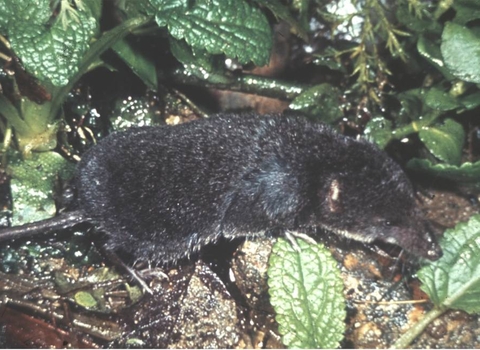
©Geoffrey Kinns
Water shrew
The large, dark grey water shrew lives mostly in wetland habitats. It's a good swimmer that hunts for aquatic insects and burrows into the banks.
Scientific name
Neomys fodiensWhen to see
January to DecemberSpecies information
Category
Statistics
Length: 6-9.5cmTail: 4.5-8cm
Weight: 12-18g
Average lifespan: 1-2 years
Protected in the UK under the Wildlife and Countryside Act, 1981.
